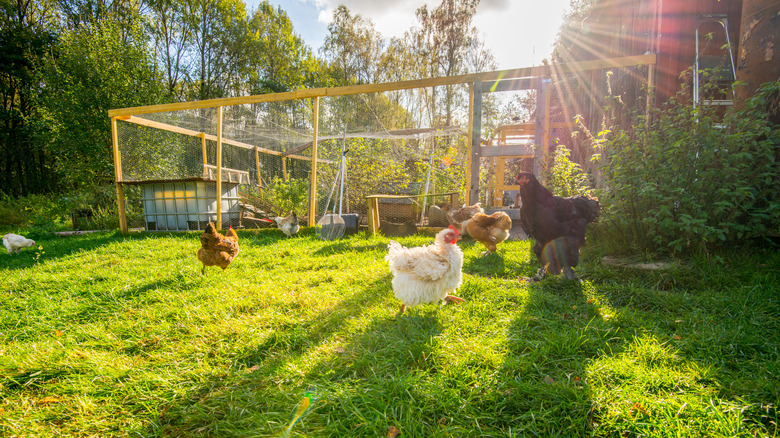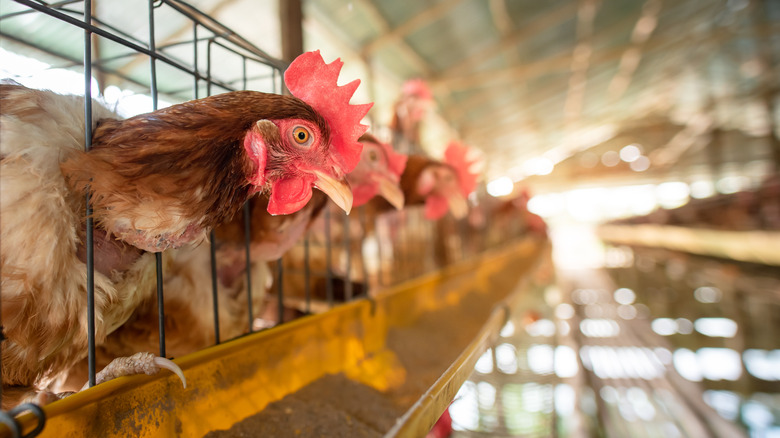'Free Range Chicken' May Not Mean What You Think It Does
Grocery store aisles today are oozing with labels designed to entice consumers. Venture down any poultry aisle, and you may find terms such as "organic," "cage-free," and "no hormones added" slapped on the packaging of a chicken breast. While they all sound great, how do you actually read chicken labels and what do those terms really mean?
Some are more straightforward than others. When eggs come from "cage-free" hens, according to Medical News Today, that's exactly what they are — free from cages and able to nest, roost, and forage, unlike caged hens. However, this doesn't mean they're spending their days frolicking around green pastures, as many cage-free chickens are confined to aviaries and kept indoors.
"Free range" is an even murkier label for chicken. It was created for good reason — according to The Humane League, chickens are often confined to cages where they can't stretch their wings or crowded barns where they can't exercise and rest. These conditions, aside from being inhumane, can lead to a plethora of health issues for people eating chicken. Bold Business notes that eating farmed poultry can lead to diseases like salmonella, food poisoning, and colon cancer. It can even lead to environmental hazards, Biotechnology in Animal Husbandry reports, including greenhouse gas emissions and large amounts of waste.
So is free range chicken the cure to all these problems? While it's certainly better than the alternative, there are a few caveats to this label that are important to remember.
Free range chickens aren't always so free
Free range hens are "housed in a way that allows for unlimited access to food and water and provides the freedom to roam within the area," but also given "continuous access to the outdoors during their laying cycle," according to the USDA Agricultural Marketing Service (AMS). The key phrase here is "access to the outdoors," as there is no regulation on what that looks like. Serious Eats notes that chickens could have access to a door in their barn that they never use, meaning they would spend most of their time indoors but still be considered free range. There's also no AMS requirement for how long the birds must be outside or how they're treated, and many are still subject to the same inhumane and disease-inducing treatments as their caged brethren (via PETA).
Trying to expand on the definition of free range, different organizations have come up with their own standards for the term. The Certified Humane Program, for example, requires each bird to have two square feet of outdoor space to be considered free range, and they must be outside for a minimum of six hours per day. In the American Humane Association's definition of free range, chickens must have at least 21.8 square feet of outdoor area per bird.
It's possible to find safely-raised chicken, but it's important to do your research, as grocery store labels can be misleading. When in doubt, you can always try a nutritious egg alternative.

